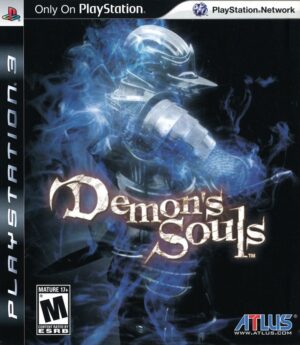Retro Replay Review
Gameplay
Fatal Frame II: Crimson Butterfly retains the series’ signature mechanic of photographing hostile spirits with the Camera Obscura, yet refines it in subtle but meaningful ways. Unlike its predecessor, you no longer need to charge each shot; instead, each roll of film comes with its own loading time, introducing a fresh tension as you juggle defense and offense. Choosing the right film type—whether standard, high-speed, or special elemental rolls—becomes a tactical decision that can leave Mio vulnerable when loading, amplifying every encounter with restless apparitions.
(HEY YOU!! We hope you enjoy! We try not to run ads. So basically, this is a very expensive hobby running this site. Please consider joining us for updates, forums, and more. Network w/ us to make some cash or friends while retro gaming, and you can win some free retro games for posting. Okay, carry on 👍)
The game’s upgrade system deepens your engagement by tying camera enhancements to both spirit points and physical items. As you capture ghosts in well-timed, close-up shots, you accumulate spirit points that fuel the camera’s special abilities—such as wide-angle blasts or elemental attacks. However, to unlock each new level of these stats, you also need to locate rare items scattered throughout the Lost Village. This layered progression encourages thorough exploration and rewards risk-taking in ghostly confrontations.
Exploration itself feels measured and haunted. The Lost Village’s labyrinthine layout stretches across overgrown pathways, abandoned shrines, and dilapidated homes, each corridor harboring secrets and sudden apparitions. Puzzles range from deciphering occult glyphs to manipulating environmental objects, all while your heart pounds to the soundtrack’s unsettling harmonies. Despite occasional backtracking, the sense of dread never wanes—every creak of floorboard or whisper in the wind could herald a spirit’s arrival.
Graphics
Released in the early years of the PlayStation 2, Fatal Frame II nevertheless achieves a strikingly atmospheric presentation. Textures on moss-covered walls, rusted metal gates, and weathered wood exude decay, and the dynamic lighting casts long, wavering shadows that dance just beyond your peripheral vision. The game’s muted color palette—dominated by earthy browns, sickly greens, and ghostly grays—reinforces an oppressive mood that feels genuinely unsettling.
Character models for Mio and Mayu are surprisingly expressive for their era, with subtle animations capturing fear in their quickened breathing or trembling hands. The ghosts themselves are a high point: semi-translucent, twisted by sorrow or rage, they drift through rooms or lurch into view with haunting realism. Each spirit type boasts unique design touches—from the veils draped over some apparitions to the grotesque wounds brandishing others—making every encounter memorable and terrifying.
Complementing the visuals is an eerie soundscape that capitalizes on ambient creaks, distant lullabies, and sudden, piercing shrieks. While strictly outside “graphics,” this audio synergy underscores the game’s ability to make static environments feel alive and malevolent. Carefully placed camera angles further boost the cinematic tension, framing shrines or empty hallways in a way that feels both purposeful and ominous.
Story
Fatal Frame II’s narrative revolves around twin sisters Mio and Mayu, whose childhood bond frays as they venture into a forest that swallows the path home. When they stumble upon the Lost Village—a settlement erased from the living world long ago—the sisters discover ghosts roaming empty streets, all dragging the weight of unfinished rituals. This core premise weaves traditional Japanese folklore with psychological tension, placing you directly in Mio’s shoes as she battles both external specters and internal fears.
As Mayu begins to act strangely—speaking in cryptic voices and resisting her sister’s reassurances—the story gains emotional depth. Player-invested moments arise when caring choices must be made: should Mio press on alone to find an escape, or risk saving Mayu from her own unraveling mind? These stakes feel deeply personal, especially when flashbacks to happier memories contrast so sharply with the blood-drenched altars scattered throughout the village.
Multiple endings hinge on your actions: rescuing Mayu, laying the spirits to rest, or suffering a more tragic fate. This branching conclusion encourages replayability, inviting you to uncover every nuance of the ritual at the heart of the village’s curse. Through subtle environmental storytelling—scraps of diary pages, ritualistic effigies, and ghostly murmurs—the game gradually reveals its lore, making each revelation feel earned and unsettling.
Overall Experience
Fatal Frame II: Crimson Butterfly stands as a masterclass in survival-horror design, where vulnerability and strategy intermingle with spine-chilling atmosphere. Every mechanic—from the choice of film type to the upgraded spectral powers—reinforces a sense of precarious survival. The game never replaces genuine fear with cheap jump scares; instead, it sustains tension through sound, shadow, and the unpredictable behavior of spirits.
The art direction and sound design collaborate to create an immersive horror tableau that feels uniquely Japanese in its attention to folklore and ritual. While some modern players may find the controls or slowdown during film loading a touch dated, these quirks amplify the emotional investment each time you decide whether to snap a critical photo or back away into the darkness.
With its emotionally fraught story, haunting environments, and refined gameplay loop, Fatal Frame II: Crimson Butterfly remains a standout experience on the PlayStation 2—and a must-play for horror enthusiasts. Whether you’re drawn by the challenge of spectral photography or the tragic fates of the twin sisters, the game offers an unforgettable descent into a world where the past refuses to stay buried. Highly recommended for those seeking both atmospheric storytelling and tense, methodical combat against the otherworldly.
 Retro Replay Retro Replay gaming reviews, news, emulation, geek stuff and more!
Retro Replay Retro Replay gaming reviews, news, emulation, geek stuff and more!




Reviews
There are no reviews yet.